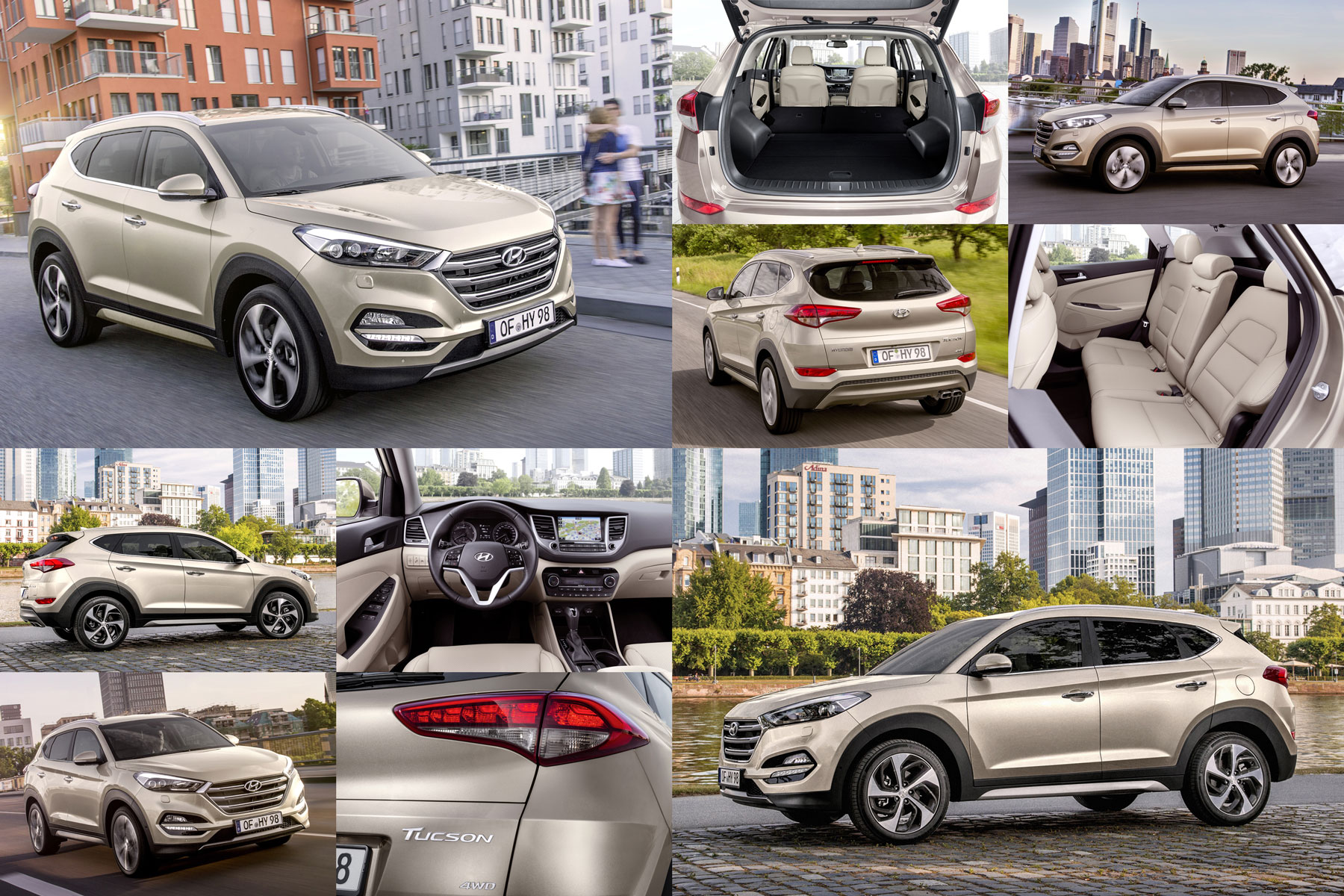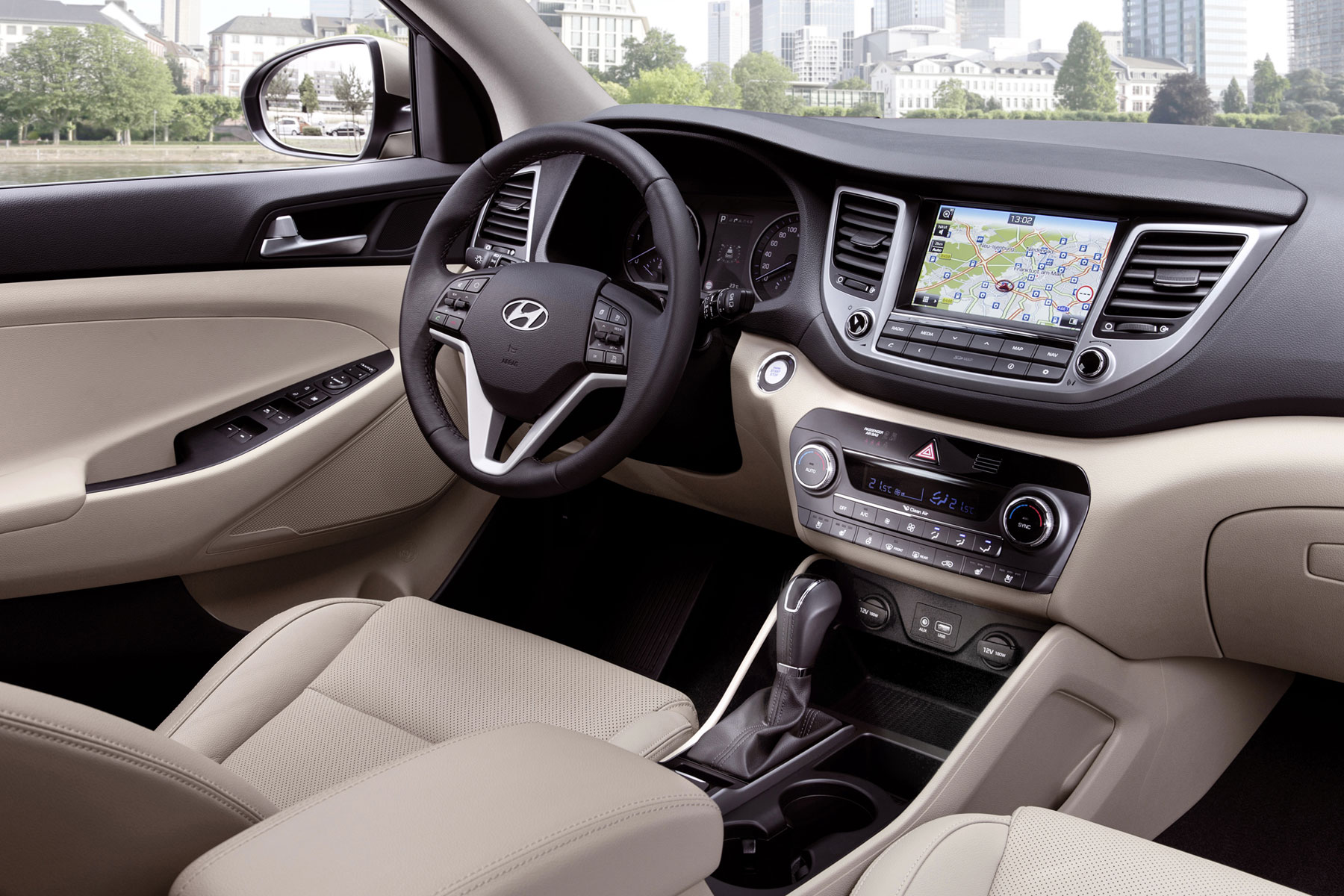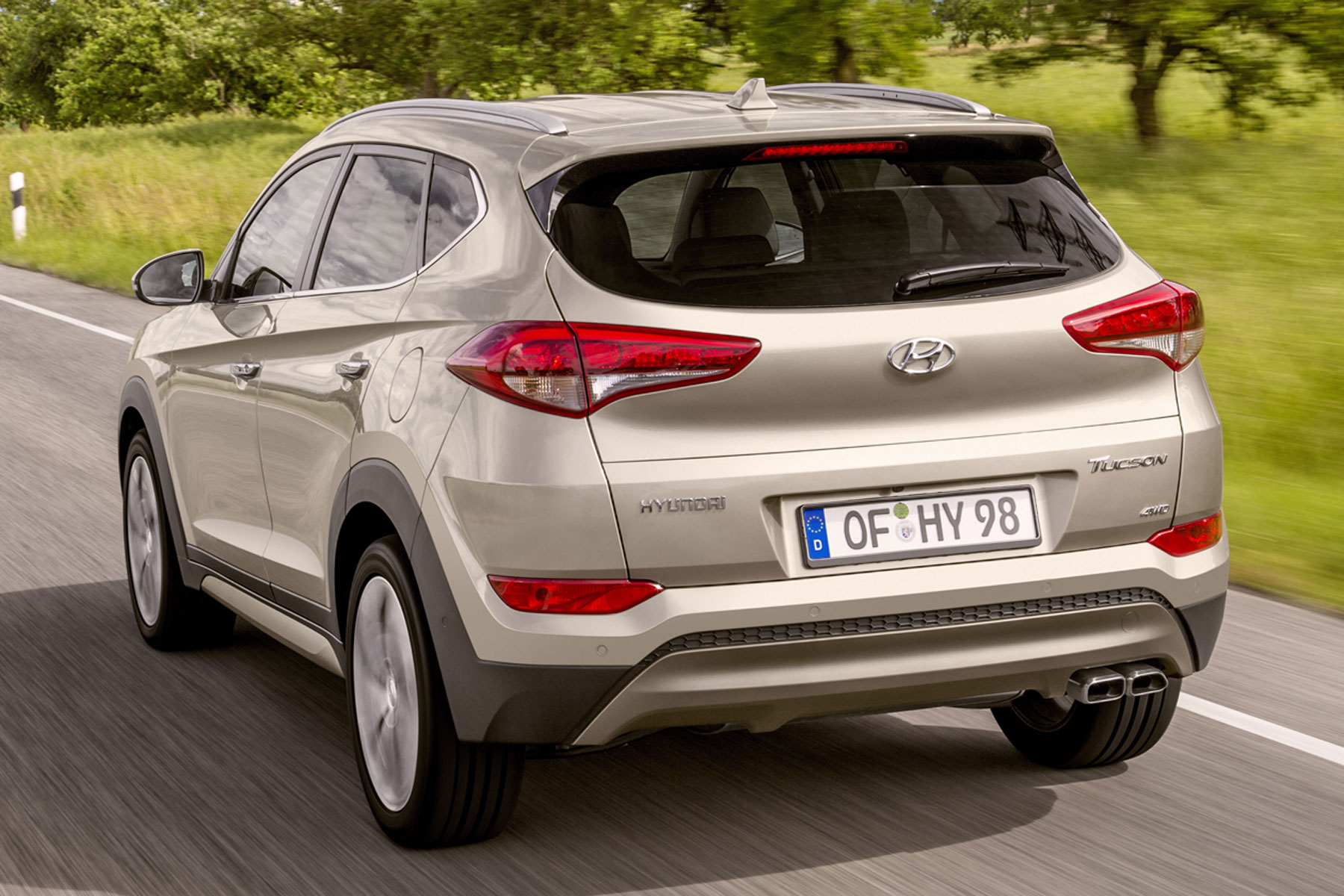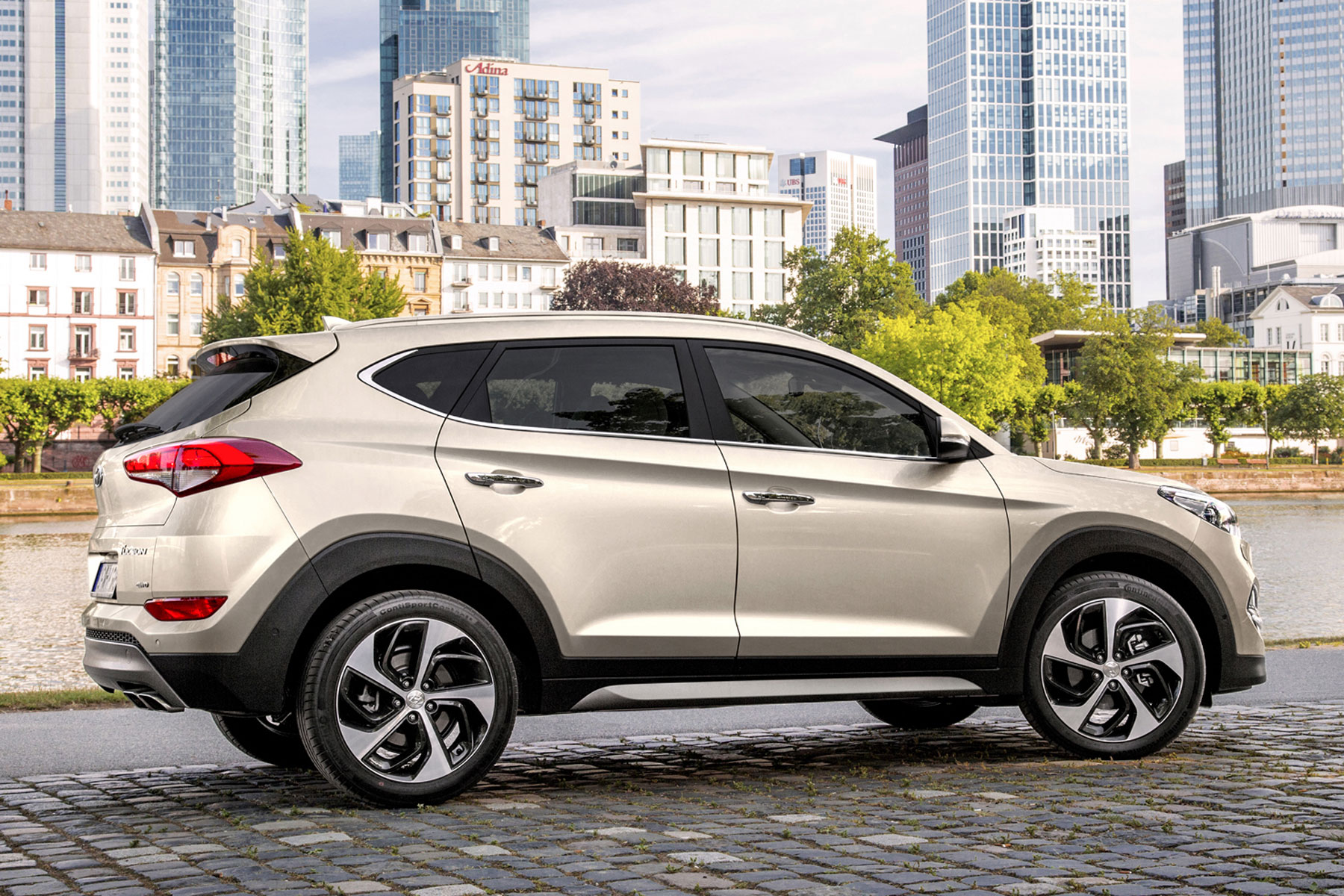Is Hyundai’s ‘new ix35’ good enough to take on the Nissan Qashqai? Competitive pricing and an impressive all-round performance mean it’s in with a strong shot.
If you dredge the depths of your memory, the name Tucson may just mean something to you. A dumpy old-school 4×4, it did the business as long as you didn’t have to look at yourself in a passing shop window. Its replacement was the Hyundai ix35, a name designed to banish all thought of the original.
Well, now Hyundai reckons you’ve forgotten about the old car so the latest ix35 is, again, called the Tucson. It’s a proper mid-sized SUV, of the size that gets buyers of the Focus/Golf/Astra all excited. For many car drivers, an SUV like this is the way forward, adding a bit of funk to the driveway, even the promise of four-wheel-drive if you really want it, all for much the same price as a family car.
Today this is a very hot market, and rivals are many and varied. Ford Kuga, Honda CR-V, Kia Sportage, Mazda CX-5, Skoda Yeti, VW Tiguan to name just a few. Then slightly to the right are the Crossovers like the Nissan Qashqai and Renault Kadjar.
So Hyundai’s new Tucson has to hit the ground running. The design is certainly of the moment, with a square, deep, chiselled nose making it look like a smaller version of the impressive new Volvo XC90. It’s bold, almost elegant, and certainly no longer a budget-looking alternative to the mainstream.
In fact Hyundai is mainstream today. The Tucson is built in Europe and is sold at prices that are only just a little cheaper than rivals. Prices start at £18,695 for a front-wheel-drive petrol model, and you can get a diesel for just over £20k. Perhaps ambitiously, the top model is now £32,345, though that gets you a 185hp diesel auto with impressive specification.
Hyundai Tucson: On the road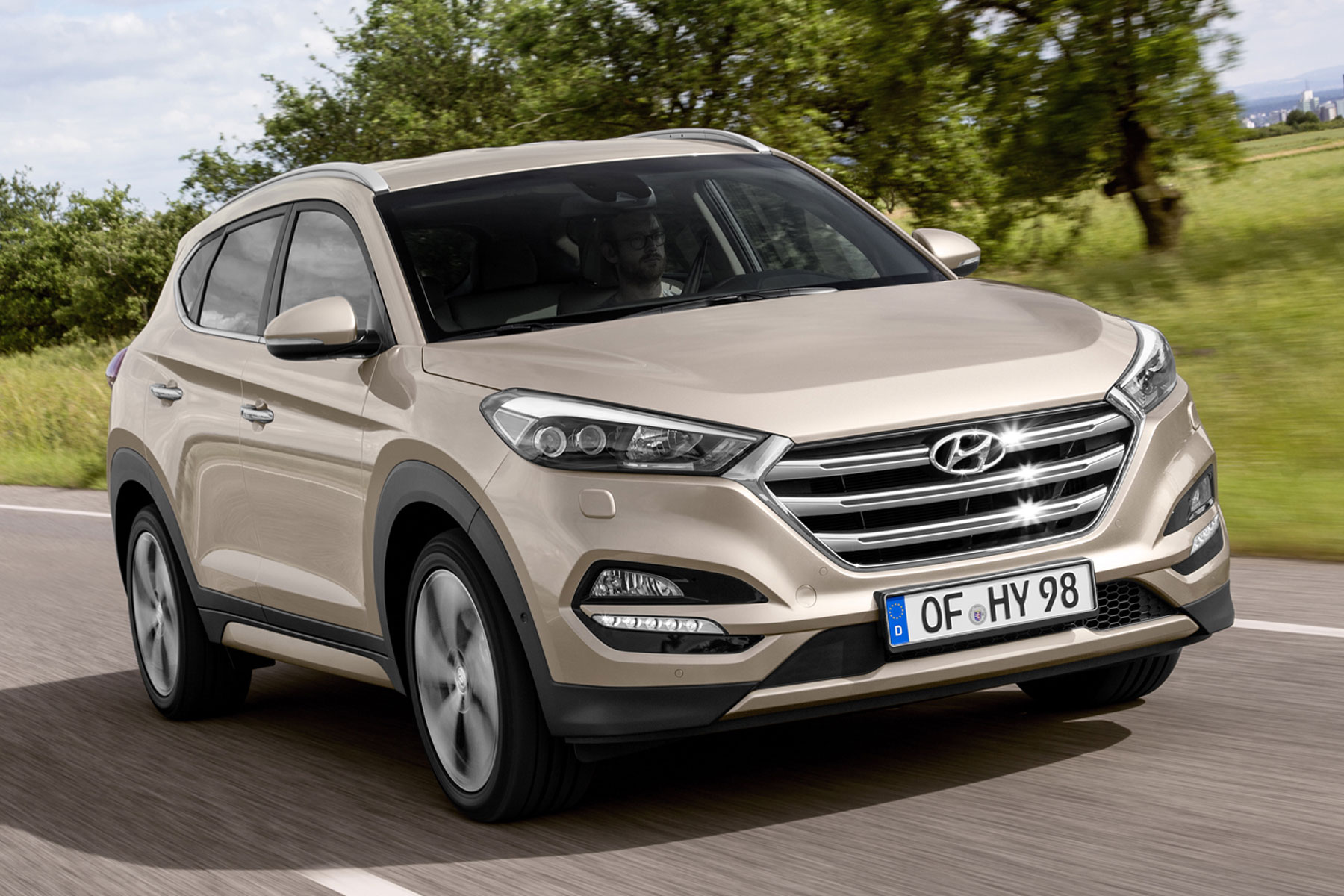
The biggest selling ix35 was the front-wheel-drive 1.7-litre diesel with 116hp, and though that’s likely to remain the case, the recent undercurrents about diesel emissions may encourage buyers to look at the new 1.6 T-GDi petrol turbo instead. £1,900 more than the 1.7 diesel but with four-wheel-drive as standard, it’s a blast to drive in a way that no Hyundai SUV has been before. Power is 177hp, and there’s an excellent seven-speed new double-clutch automatic transmission on offer, which adds to the driving pleasure.
There’s a new performance diesel version on offer too. The standard 136hp 2.0 turbo-diesel has been uprated to 185hp, which is less about the outright performance than the manner in which it quickly gains speed and makes quiet, relaxed progress. Unfortunately, the 2.0 diesels still have to make do with an old-school six-speed auto box. You can still buy the standard 2.0 CRDi too, with the same power as before but more torque.
Just as significant as the new engines are the changes to the ride. It’s now more compliant, dealing better with the small bumps you find in cities. It’s really pretty good for an SUV, though a decent saloon car will still knock it for six for sophistication.
Hyundai Tucson: On the inside
The interior offers no real surprises, no shock value as to features or quality. It’s all soundly built, a bit too solid where others are soft and touchy-feely, but a genuine step forward from the old Hyundai ix35.
The seats are a bit softer, which is a good thing, as the support seems undiminished. Space in the rear is generous for two adults as long as there isn’t someone huge in the front. The back seats recline and they fold dead flat onto the cushion easily. The boot space is averagely big.
It’s the equipment count that works in the Tucson’s favour. All models get a DAB radio, alloys, aircon and automatic headlights. The SE has parking sensors at the rear, heated front seats, lane keep assist and dual zone climate control. Navigation is an £800 option that includes a very useful rear-view camera and a seven-year subscription to TomTom live services.
Skipping up to the top model, the Premium SE comes with a heated steering wheel, self parking on Tucsons with automatic transmission, an electric tailgate, air-conditioned, ventilated seats and a panoramic roof. Try specifying all that on your Audi Q3 and you’ll get a nasty shock.
Hyundai Tucson: Running costs
In Europe diesel is still king. The low-powered 1.7-litre CRDi will thus continue to fulfil the demands of many, even if its performance only just boarders on satisfactory.
To be fair that car wasn’t available to drive, but there’s no reason to believe it will be any different to the 1.7 in the ix35. Its big deal is price, and economy of 61.7mpg on the combined statutory calculation.
Take that last figure with a bucket of salt, as ever. More problematic is the 2.0 CRDi diesel, which in low or high-power form, has proved to have a thirst for fuel, especially when mated to that inefficient six-speed automatic transmission.
Hyundai says between 46 and 54mpg for the 4×4 versions, though the better efficiency of the revised engines still makes those numbers hard to believe. For the first time there is a 2.0 CRDi with just front wheel drive, and that offers a genuine 4mpg advantage.
A big question surrounds the new 1.6 turbo petrol engine, which supersedes the naturally aspirated 2.0. That’s not going to be near the diesels for fuel economy, yet we saw 28mpg in the 1.6 T-GDi and the statutory figures suggest 37 for the manual 38 for the auto. CO2 levels, though, are still 175g/100km or more.
Depreciation should be relatively low, much lower than for those family hatchback alternatives. New or used, SUVs are in demand.
Hyundai Tucson: Verdict
Time and again Hyundai has proven that it doesn’t need state of the art engineering to produce strong selling cars, as long as the price and equipment specification meet buyer demands. Yet here with the new Tucson, the company is pretty well on the mark in most areas.
The space, comfort and ride quality all please, as do features like the standard digital radio. The fact that you can now get advanced features like self parking, a heated steering wheel and ventilated leather seats means the Tucson can bear comparison with some very pricey Land Rovers, Audis and BMWs.
Hyundai still doesn’t have the cachet of these brands, but it has successfully moved away from being simply a budget range of cars. There’s still work to be done – the only model with a decent automatic transmission is the new petrol turbo model, and the economy of the 4×4 versions is off the mark – but there’s much to like and recommend about the new Tucson.
Specification: 2015 Hyundai Tucson
Engines: 1.6, 1.6 4urbo 4-cylinder petrol; 1.7 and 2.0-litre 4-cylinder turbo diesel
Gearbox: Six-speed manual and six/seven speed automatic
Prices from: £18,695
Power: 116hp – 185hp
Torque: 119 – 295lb ft
0-62mph: 9.1 – 13.7 seconds
Top speed: 109 – 125mph
Fuel economy: 37.2 – 61.7mpg
CO2 emissions: 119 – 177g/km
